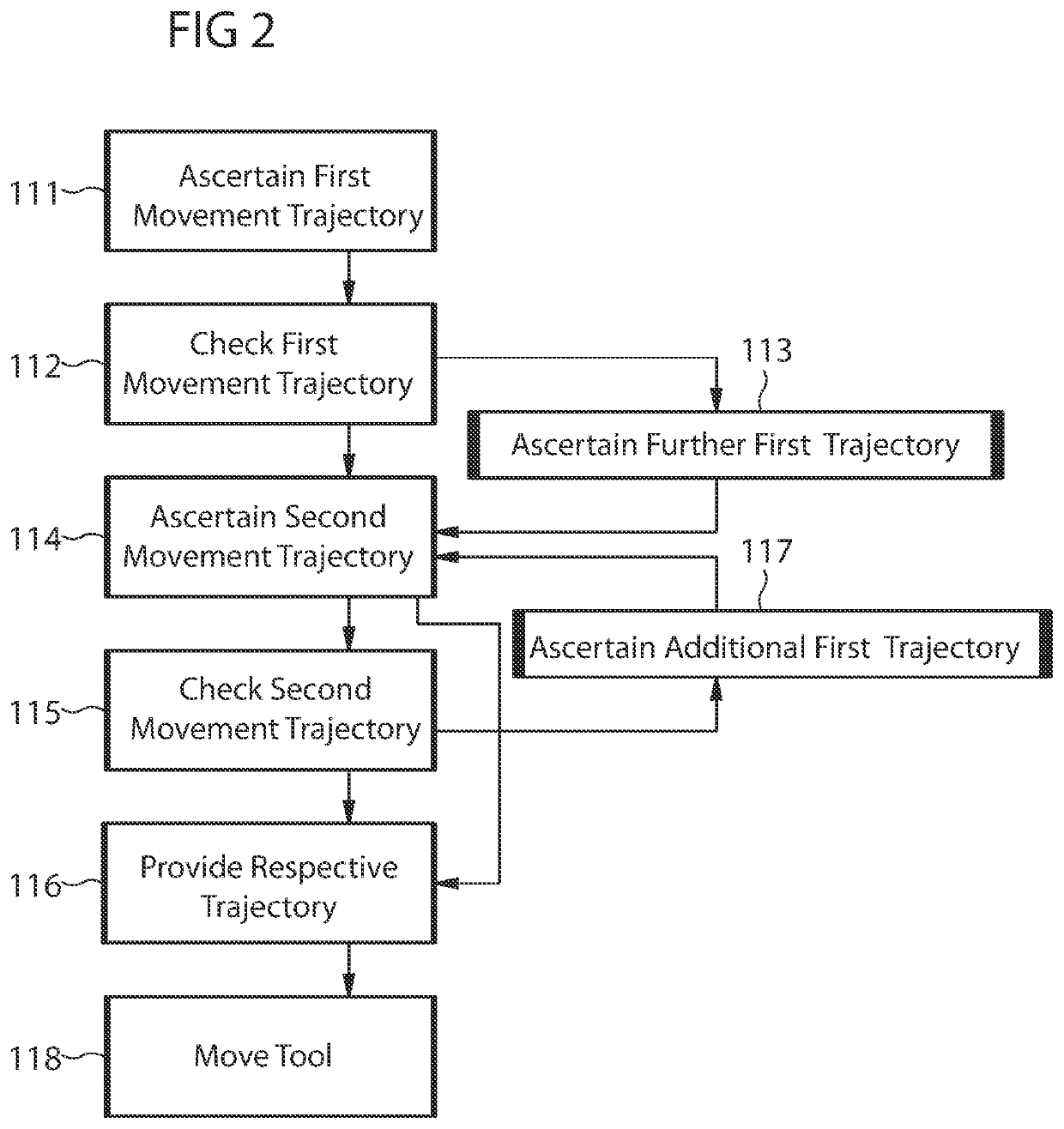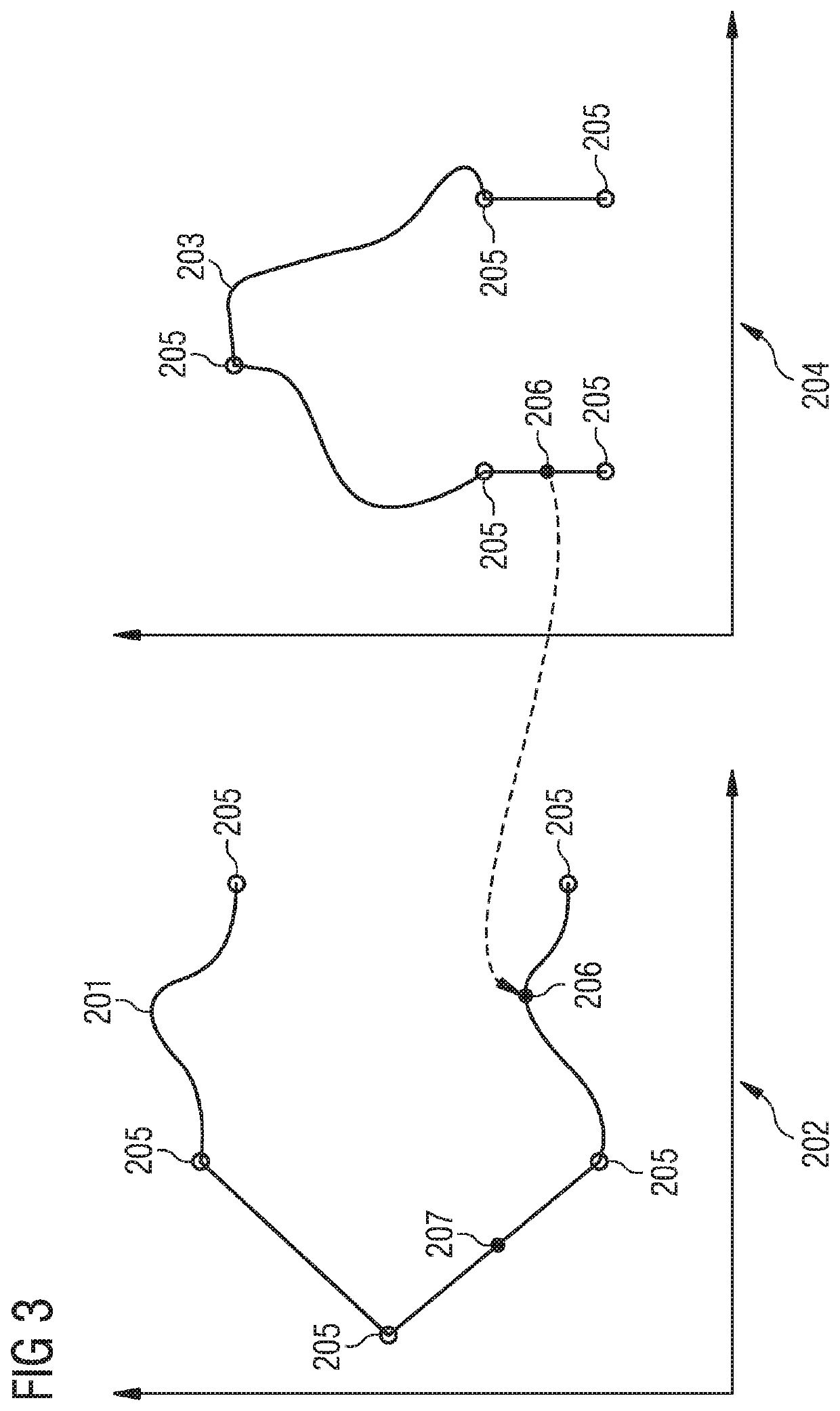Computer-assisted ascertainment of a movement of an apparatus
- Summary
- Abstract
- Description
- Claims
- Application Information
AI Technical Summary
Benefits of technology
Problems solved by technology
Method used
Image
Examples
Embodiment Construction
[0046]FIG. 1 schematically shows a kinematic design of an exemplary apparatus 101 comprising a tool 107 that is movable by way of translational movement axes 102, 103 and rotational movement axes 104, 105, 106 of the apparatus 101. For reasons of simplicity, movement means such as motors and drives of the apparatus 101 are not shown in FIG. 1. The apparatus 101 can be embodied as a robot, as an articulated robot or as any other type of apparatus 101 that can move the tool 107 by way of translational and / or rotational movement axes 102, 103, 104, 105, 106. The translational movement axes 102, 103 are embodied as linear articulations. The rotational movement axes 104, 105, 106 can be embodied in the form of articulations or hinges. Rigid connecting elements are formed between two articulations of the apparatus 101. Movement options of the connecting elements are indicated by double-headed arrows in FIG. 1.
[0047]The apparatus 101 has a first translational axis 102 and a second translat...
PUM
 Login to View More
Login to View More Abstract
Description
Claims
Application Information
 Login to View More
Login to View More - R&D
- Intellectual Property
- Life Sciences
- Materials
- Tech Scout
- Unparalleled Data Quality
- Higher Quality Content
- 60% Fewer Hallucinations
Browse by: Latest US Patents, China's latest patents, Technical Efficacy Thesaurus, Application Domain, Technology Topic, Popular Technical Reports.
© 2025 PatSnap. All rights reserved.Legal|Privacy policy|Modern Slavery Act Transparency Statement|Sitemap|About US| Contact US: help@patsnap.com



